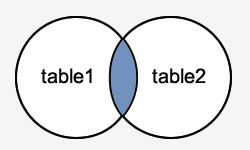SQL Server: Check Constraints
This SQL Server tutorial explains how to use the check constraints in SQL Server (Transact-SQL) with syntax and examples.
What is a check constraint in SQL Server?
A check constraint in SQL Server (Transact-SQL) allows you to specify a condition on each row in a table.
Note
- A check constraint can NOT be defined on a SQL View.
- The check constraint defined on a table must refer to only columns in that table. It can not refer to columns in other tables.
- A check constraint can NOT include a Subquery.
- A check constraint can be defined in either a CREATE TABLE statement or a ALTER TABLE statement.
Using a CREATE TABLE statement
The syntax for creating a check constraint using a CREATE TABLE statement in SQL Server (Transact-SQL) is:
CREATE TABLE table_name
(
column1 datatype [ NULL | NOT NULL ],
column2 datatype [ NULL | NOT NULL ],
...
CONSTRAINT constraint_name
CHECK [ NOT FOR REPLICATION ] (column_name condition)
);- table_name
- The name of the table that you wish to create with a check constraint.
- constraint_name
- The name to assign to the check constraint.
- column_name
- The column in the table that the check constraint applies to.
- condition
- The condition that must be met for the check constraint to succeed.
Example
Let's look at an example of how to use the CREATE TABLE statement in SQL Server to create a check constraint.
For example:
CREATE TABLE employees
( employee_id INT NOT NULL,
last_name VARCHAR(50) NOT NULL,
first_name VARCHAR(50),
salary MONEY,
CONSTRAINT check_employee_id
CHECK (employee_id BETWEEN 1 and 10000)
);In this first example, we've created a check constraint on the employees table called check_employee_id. This constraint ensures that the employee_id field contains values between 1 and 10000.
Let's take a look at another example.
CREATE TABLE employees
( employee_id INT NOT NULL,
last_name VARCHAR(50) NOT NULL,
first_name VARCHAR(50),
salary MONEY,
CONSTRAINT check_salary
CHECK (salary > 0)
);In this second example, we've created a check constraint on the employees table called check_salary. This constraint ensures that the salary value is greater than 0.
Using an ALTER TABLE statement
The syntax for creating a check constraint in an ALTER TABLE statement in SQL Server (Transact-SQL) is:
ALTER TABLE table_name ADD CONSTRAINT constraint_name CHECK (column_name condition);
- table_name
- The name of the table that you wish to modify by adding a check constraint.
- constraint_name
- The name to assign to the check constraint.
- column_name
- The column in the table that the check constraint applies to.
- condition
- The condition that must be met for the check constraint to succeed.
Example
Let's look at an example of how to use the ALTER TABLE statement to create a check constraint in SQL Server.
For example:
ALTER TABLE employees
ADD CONSTRAINT check_last_name
CHECK (last_name IN ('Smith', 'Anderson', 'Jones'));In this example, we've created a check constraint on the existing employees table called check_last_name. It ensures that the last_name field only contains the following values: Smith, Anderson, or Jones.
Drop a Check Constraint
The syntax for dropping a check constraint in SQL Server (Transact-SQL) is:
ALTER TABLE table_name DROP CONSTRAINT constraint_name;
- table_name
- The name of the table that you wish to drop the check constraint.
- constraint_name
- The name of the check constraint to remove.
Example
Let's look at an example of how to drop a check constraint in SQL Server.
For example:
ALTER TABLE employees DROP CONSTRAINT check_last_name;
In this SQL Server example, we are dropping a check constraint on the employees table called check_last_name.
Enable a Check Constraint
The syntax for enabling a check constraint in SQL Server (Transact-SQL) is:
ALTER TABLE table_name WITH CHECK CHECK CONSTRAINT constraint_name;
- table_name
- The name of the table that you wish to enable the check constraint.
- constraint_name
- The name of the check constraint to enable.
Example
Let's look at an example of how to enable a check constraint in SQL Server.
For example:
ALTER TABLE employees WITH CHECK CHECK CONSTRAINT check_salary;
In this example, we are enabling a check constraint on the employees table called check_salary.
Disable a Check Constraint
The syntax for disabling a check constraint in SQL Server (Transact-SQL) is:
ALTER TABLE table_name NOCHECK CONSTRAINT constraint_name;
- table_name
- The name of the table that you wish to disable the check constraint.
- constraint_name
- The name of the check constraint to disable.
Example
Let's look at an example of how to disable a check constraint in SQL Server.
For example:
ALTER TABLE employees NOCHECK CONSTRAINT check_salary;
In this SQL Server example, we are disabling a check constraint on the employees table called check_salary.

No comments:
Post a Comment